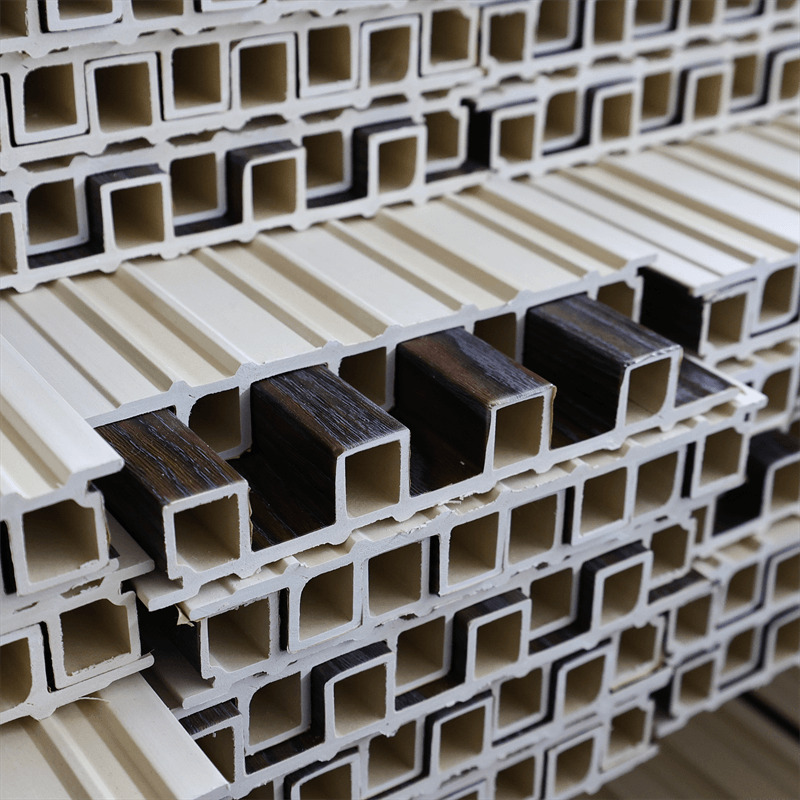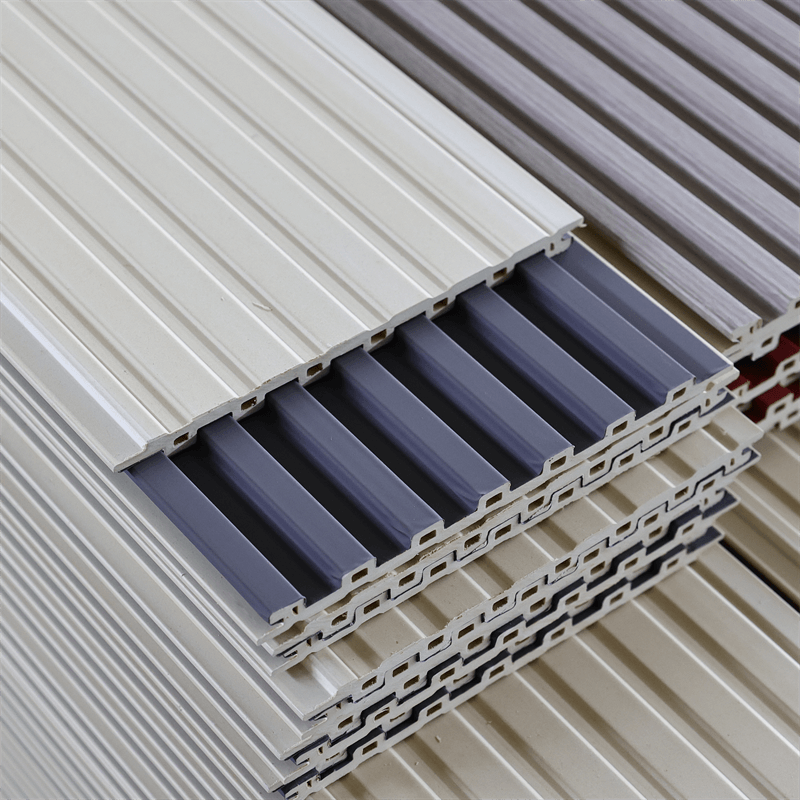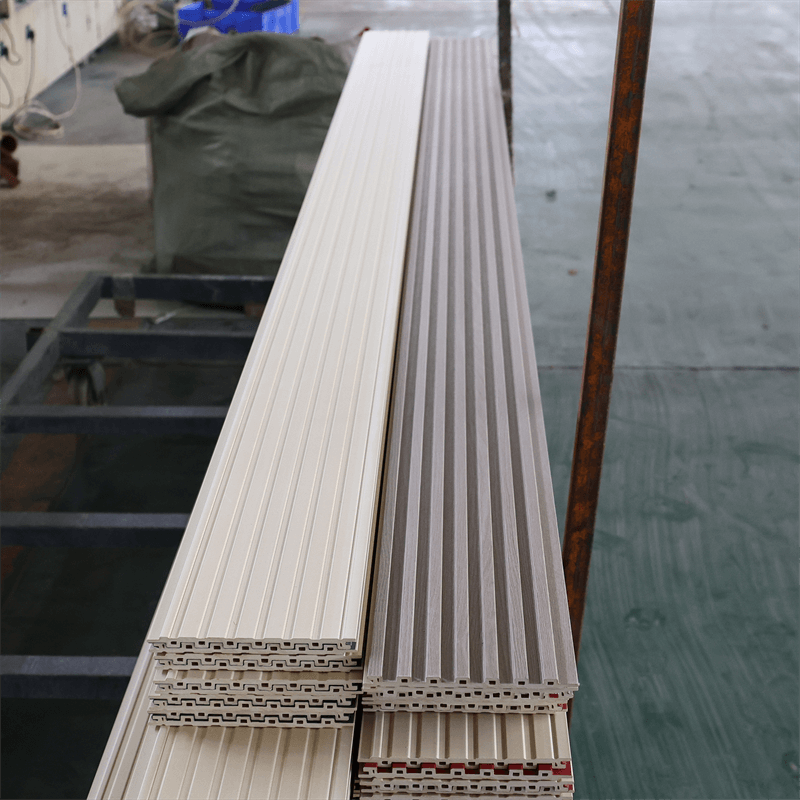As sustainable architecture continues to gain traction, the demand for eco-friendly building materials has significantly increased.
WPC (Wood Plastic Composite) wall panels have emerged as a popular choice in this regard.
This essay explores the numerous advantages of WPC wall panels and how they contribute to sustainable and modern architecture.
From their eco-friendly composition to their durability and versatility, WPC wall panels offer a range of benefits that make them an attractive option for architects, designers, and homeowners alike.
I. Eco-Friendly Composition
One of the primary advantages of WPC wall panels lies in their eco-friendly composition.
These panels are typically made from a combination of recycled wood fibers and plastic resin.
By utilizing wood waste and recycled plastics, WPC wall panels help reduce the demand for new timber and virgin plastic, thus promoting resource conservation and waste reduction.
Additionally, the manufacturing process of WPC panels consumes less energy and emits fewer greenhouse gases compared to traditional building materials.
This eco-friendly composition makes WPC wall panels a sustainable choice for modern architecture.

II. Durability and Longevity
WPC wall panels are known for their exceptional durability and longevity.
The combination of wood fibers and plastic resin results in a material that is resistant to rot, decay, and insect damage.
Unlike traditional wood panels, WPC panels do not warp, crack, or splinter, ensuring their longevity and reducing the need for frequent replacements.
This durability makes WPC wall panels suitable for both interior and exterior applications, as they can withstand varying weather conditions and high-traffic areas.
Whether used in residential or commercial buildings, WPC wall panels offer a long-lasting solution that minimizes maintenance efforts and costs.
III. Versatility in Design and Installation
Another significant advantage of WPC wall panels is their versatility in design and installation.
These panels can be manufactured in a wide array of colors, textures, and finishes, allowing architects and designers to achieve various aesthetic effects.
Whether aiming for a modern, rustic, or contemporary look, WPC wall panels offer design options to suit diverse architectural styles.
Furthermore, the installation of WPC panels is relatively straightforward, with options for both vertical and horizontal applications.
The panels can be easily cut, shaped, and installed using standard woodworking tools, enabling flexibility in design implementation.
The versatility of WPC wall panels opens up creative possibilities for architects and designers to bring their vision to life.
IV. Low Maintenance Requirements
In addition to their durability, WPC wall panels boast low maintenance requirements.
Unlike natural wood, which requires regular staining, sealing, and painting to maintain its appearance and protect it from the elements, WPC panels are virtually maintenance-free.
They do not require staining or painting, and their resistance to moisture and UV rays ensures they retain their color and finish over time.
Cleaning WPC panels simply involves periodic washing with water and mild soap to remove dirt and debris.
This low maintenance aspect not only saves time and effort but also reduces the use of harsh chemicals typically associated with maintenance routines.
WPC wall panels offer a range of advantages that make them a sustainable solution for modern architecture.
Their eco-friendly composition, durability, versatility in design and installation, and low maintenance requirements position them as an attractive alternative to traditional building materials.
By utilizing recycled wood fibers and plastic resin, WPC wall panels contribute to resource conservation and waste reduction.
Their durability ensures long-lasting performance, while their versatility allows architects and designers to achieve various aesthetic effects.
Furthermore, the low maintenance requirements of WPC panels minimize the use of harsh chemicals and save both time and effort.
As the demand for sustainable building materials continues to rise, WPC wall panels emerge as a viable and eco-friendly choice for architects, designers, and homeowners committed to sustainable and modern architecture.
V. Thermal and Acoustic Insulation
WPC wall panels offer excellent thermal and acoustic insulation properties, further enhancing their appeal in modern architecture.
The combination of wood fibers and plastic resin creates a material with natural insulation qualities.
WPC panels can help regulate temperature, reducing heat loss during the colder months and heat gain during the hotter months.
This thermal insulation not only enhances the comfort of the building occupants but also contributes to energy efficiency by reducing the reliance on heating and cooling systems.
Moreover, WPC wall panels also provide effective acoustic insulation, minimizing the transmission of sound between rooms or from external sources.
This feature is particularly beneficial in commercial spaces, offices, or residential buildings located in busy urban areas.
By reducing noise disturbances, WPC panels create a more peaceful and conducive environment for work, relaxation, or sleep.
VI. Resistance to Moisture and Mold
Moisture resistance is a critical factor in determining the suitability of wall panels, especially in areas prone to humidity or water exposure.
WPC wall panels excel in this regard due to their inherent resistance to moisture.
Unlike natural wood, which can absorb water and become susceptible to rot and mold growth, WPC panels are impervious to moisture.
They do not warp, swell, or decay when exposed to water, making them an ideal choice for bathrooms, kitchens, or other areas where moisture is present.
This resistance to moisture also contributes to the overall hygiene and cleanliness of the space.
WPC panels are not conducive to mold or mildew growth, ensuring a healthier indoor environment.
The ease of cleaning and maintenance of WPC panels further adds to their suitability for moisture-prone areas, as any spills or moisture can be quickly wiped away without leaving stains or marks.
VII. Fire Resistance
Safety is paramount in building design, and WPC wall panels offer an added advantage in terms of fire resistance.
These panels are manufactured with fire-retardant additives, making them inherently resistant to flames and reducing the risk of fire spreading.
WPC wall panels meet stringent fire safety standards and can effectively inhibit the progress of fire, providing occupants with valuable time for evacuation and minimizing property damage.
Furthermore, WPC panels release significantly less smoke and toxic fumes when exposed to fire compared to other traditional building materials.
This characteristic is crucial in enhancing occupant safety by reducing the inhalation of harmful gases during a fire incident.
The fire-resistant properties of WPC wall panels make them a desirable choice for both residential and commercial applications, ensuring a higher level of safety and peace of mind.
The advantages of WPC wall panels in sustainable and modern architecture are evident.

Their eco-friendly composition, durability, versatility in design and installation, low maintenance requirements,
thermal and acoustic insulation, resistance to moisture and mold, and fire resistance position them as an ideal choice for architects, designers, and homeowners.
By utilizing recycled materials, WPC panels contribute to environmental sustainability.
Their long-lasting performance, ease of installation, and wide range of design options offer flexibility in achieving aesthetic goals.
Additionally, the thermal and acoustic insulation properties, resistance to moisture and mold, and fire resistance ensure comfort, hygiene, and safety within the built environment.
With all these advantages combined, WPC wall panels stand as a sustainable solution that embodies the principles of modern architecture.

